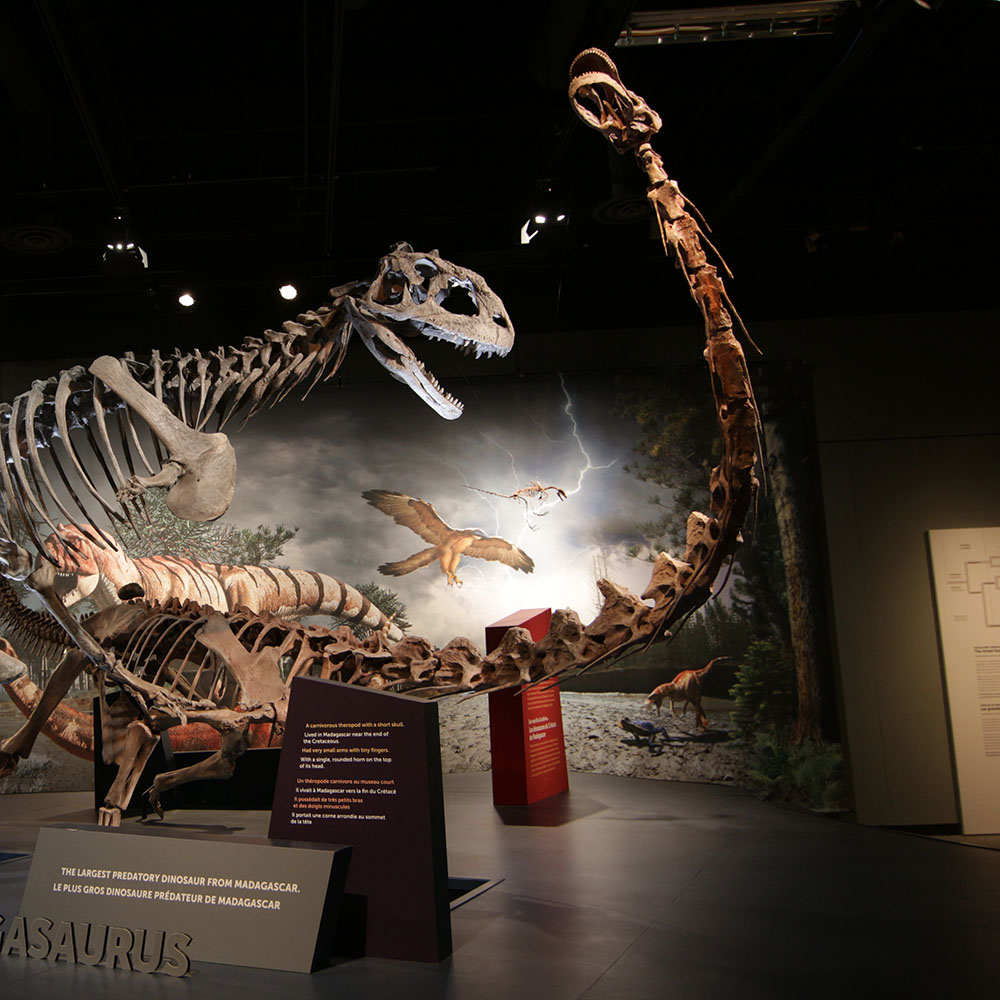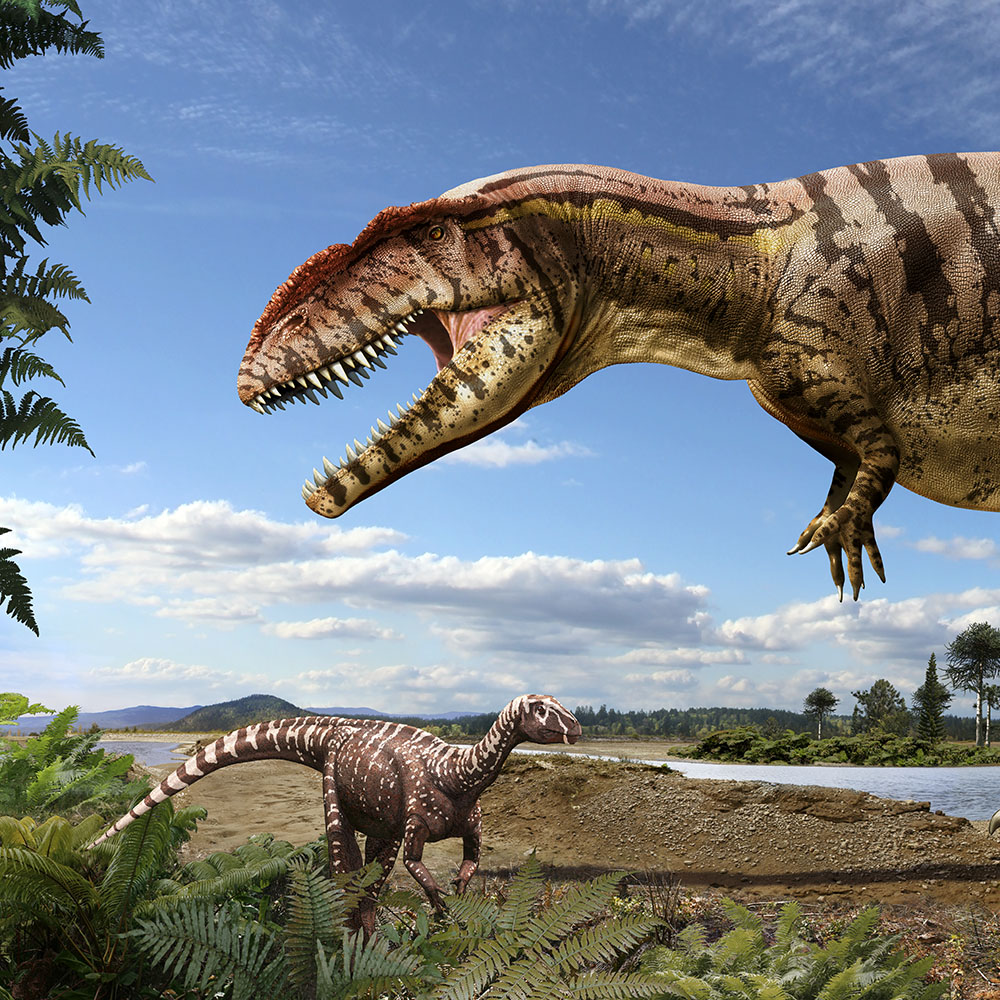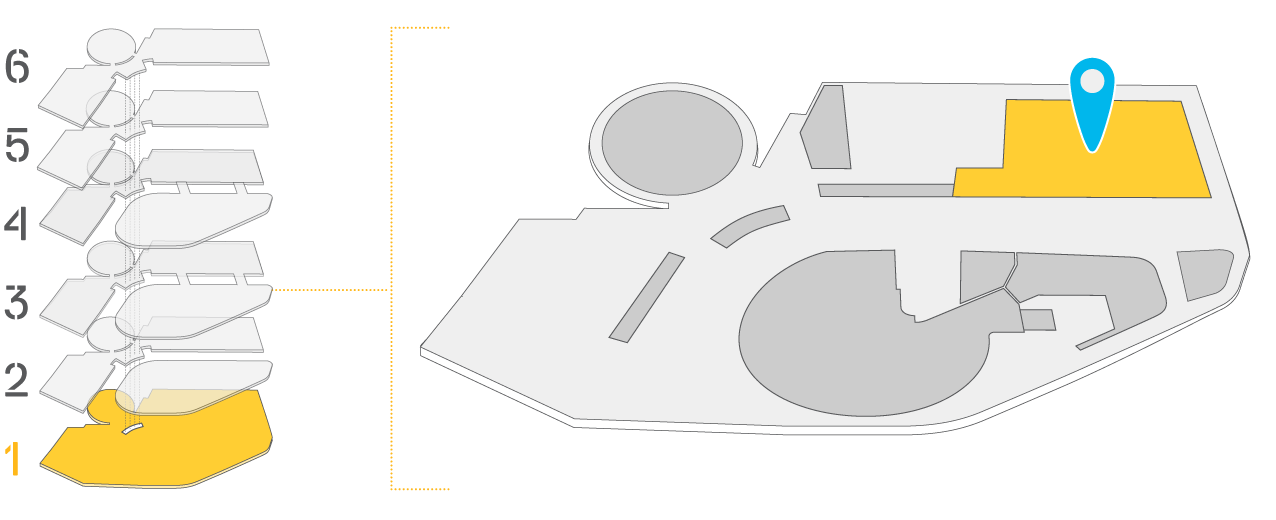Ultimate Dinosaurs: Meet a New Breed of Beast
Meet new and exotic dinosaurs from the other side of the world.
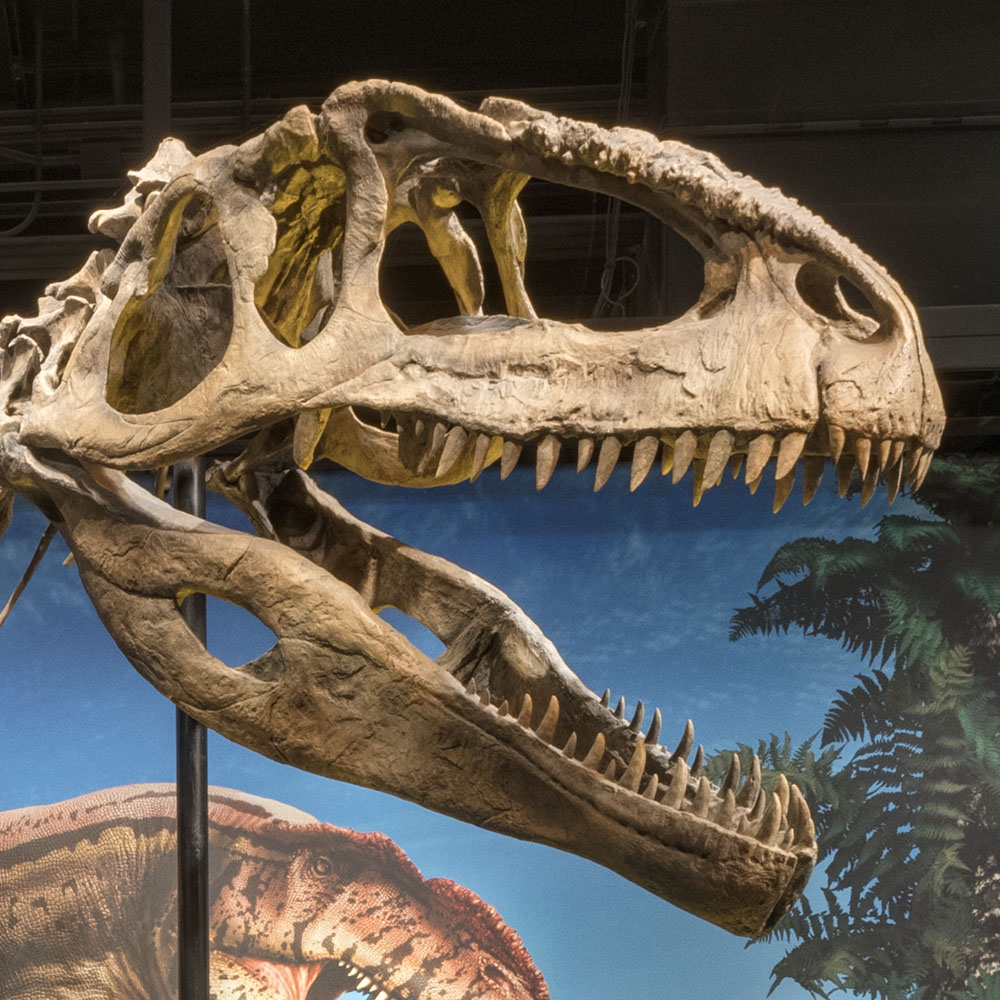
Step into the shoes of a paleontologist and uncover some of the most significant dinosaur discoveries from the Southern Hemisphere over the last two decades.
Ultimate Dinosaurs reveals a new breed of dinosaurs that evolved in isolation in South America, Africa, and Madagascar—dinosaurs unfamiliar to popular imagination. Cutting-edge technology puts a new twist on bringing these prehistoric creatures to life in the 21st century! From the tiny Eoraptor to the massive Giganotosaurus (T. rex’s bigger, badder cousin), Ultimate Dinosaurs is a fascinating study of species you have not met before.
This is not your ordinary dinosaurs exhibition. Feel the exciting and intimidating presence of these exotic creatures as you wander amongst the 13 life–size casts, in addition to authentic dinosaur fossils, and touchable fossilized dinosaur specimens. Use the augmented reality interactives to experience these dinosaurs in the flesh—animated and rendered according to the most recent scientific findings.
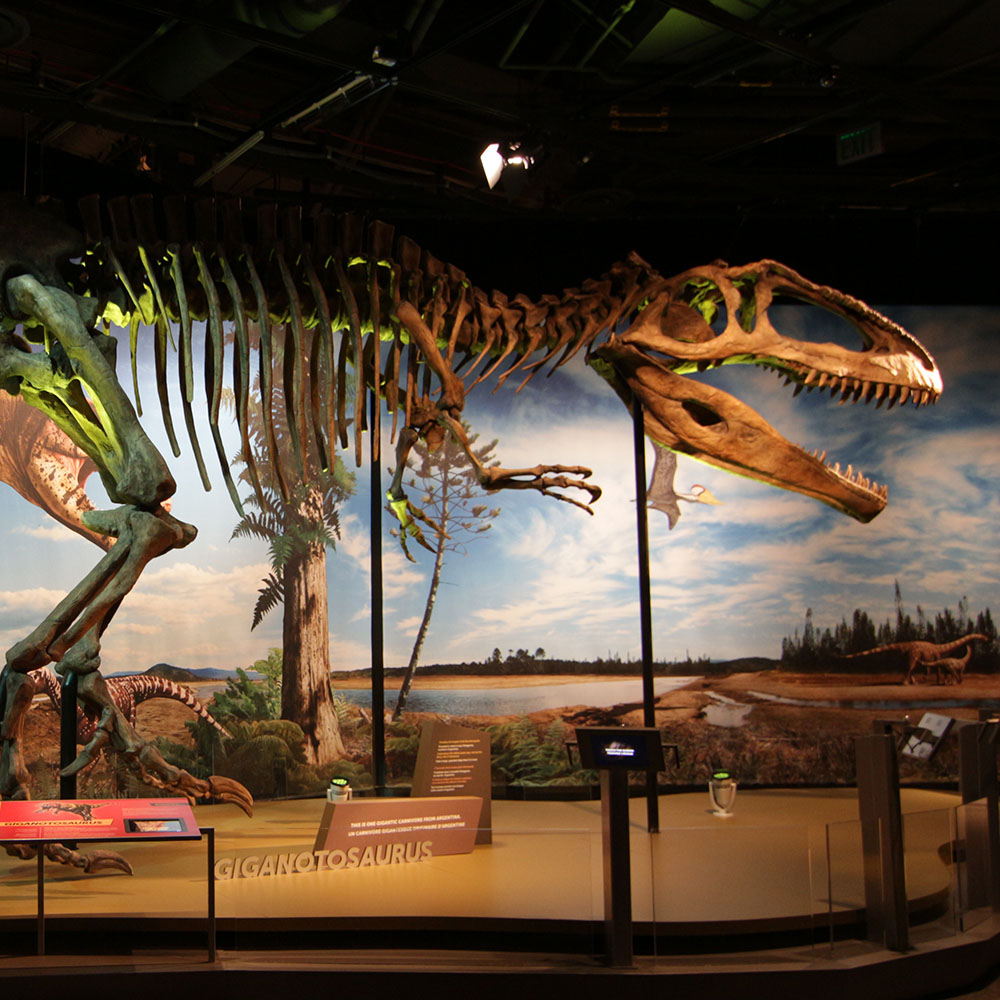
Ultimate Dinosaurs tells the story of the break-up of the supercontinent Pangaea into the continents that we know today and the ways that continental drift affected the evolution of dinosaurs during the Mesozoic Era, 250-65 million years ago. As Pangaea divided first into Laurasia in the north and Gondwana in the south, and later into the many continents we know today, dinosaurs were passengers on these drifting land masses. You’ll discover that an amazing diversity of species evolved because of this phenomenon. Dinosaurs’ imposed geographic location helped promote their evolution into an incredible array of unusual forms that dominated wherever they lived. The exhibition seeks to answer the question: why are southern dinosaurs so unique and bizarre, and why are they so different from their North American counterparts?
Standout exhibition features include:
- Eoraptor, a bipedal dinosaur that lived about 228 million years ago that had two different kinds of teeth – both serrated and flat – indicating that it was an omnivore.
- Malawisaurus, one of the earliest titanosaurs, was a sauropod from Africa. Like most titanosaurs, Malawisaurus had bones in its skin, like those in modern crocodiles.
- Suchomimus, a spinosaur from the Sahara Desert in Niger. This animal was 33 feet long and would have weighed more than 6600 pounds.
- Majungasaurus, a theropod from Madagascar.
- Rapetosaurus, a titanosaur named after the mischievous Malagasy folklore giant, Rapeto. As an adult, Rapetosaurus may have been up to 60 feet long.
- Amargasaurus, an herbivorous sauropod from Argentina, had a distinctive double row of spines on its neck and back. These colored, spine-like sails may have been used to signal other members of its species.
- Giganotosaurus, the largest carnivorous dinosaur from Gondwana and perhaps the largest land predator ever. Giganotosaurus is similar in size to Laurasia’s more famous Tyrannosaurus rex.
Ultimate Dinosaurs: Meet a New Breed of Beast will be on view from Saturday, October 8, 2022, through Sunday, April 23, 2023, inside the Hsiao Family Special Exhibition Gallery on the first floor of the museum. Admission to Ultimate Dinosaurs: Meet a New Breed of Beast is included with all museum admission tickets.
Ultimate Dinosaurs: Meet a New Breed of Beast is presented by the Science Museum of Minnesota. The exhibition was created and produced by The Royal Ontario Museum, Toronto.
Click here to access the Ultimate Dinosaurs: Meet a New Breed of Beast Educator Guide for curated activities, worksheets and more.


